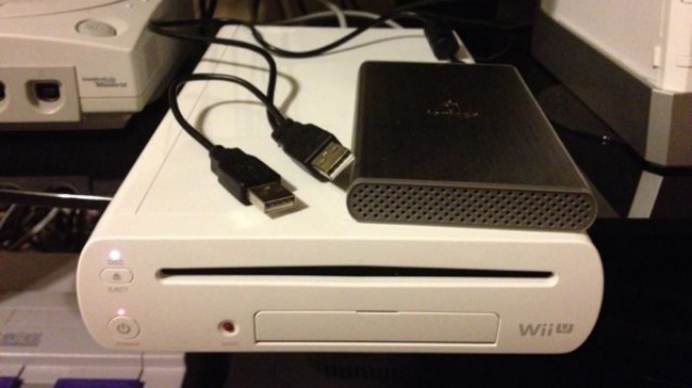The Wii U’s eShop represents a big step forward in digital distribution for Nintendo, with eShop-only indie titles sharing shelf space with downloadable versions of major retail releases from day one. These larger titles can easily occupy over 10GB of space, with Tekken Tag Tournament 2: Wii U Edition confirmed to be over 16GB.

Whether you picked up the 8GB Basic console or the 32GB Deluxe version, chances are if you dabble much in downloading you’re going to want to expand your available storage sooner or later. Luckily, Nintendo’s made it easy to augment the Wii U’s onboard storage with USB hard-disc drives (HDD), and we’re here to walk you through the process and help you get the most out of your new Wii U.
Which USB hard drives will work with Wii U?
For a USB drive to work with the Wii U, it needs to:
Be powered by an external power adaptor (i.e., requires its own power outlet)
Draw power from USB by using a Y-cable, taking up to two ports on the Wii U
Have a total capacity of two terabytes (2TB) or less
How to hook up USB drive to Wii U?
If you are going to use a USB drive that you already own, make sure you have backed-up everything you need off of it before you begin. You’ll need to format it to use it with the Wii U, and that process erases any and all data on the drive.
Step 1: Make sure your Wii U is turned off.
Step : Plug the HDD into the USB port(s) on the back of the Wii U.
Step 3: If you’re using a drive with external power, make sure it’s plugged into its own power outlet. If you’re using a USB-powered drive, make sure you’re using a Y-cable and both USB ports on the back of the Wii U.
Step 4: Turn on your console. After a short wait, you should be prompted that you’ll need to format your USB device to use it with the Wii U.
Step 5: Select “Format” – remember, this will erase any data currently on the hard drive, and once you format a drive for the Wii U, you won’t be able to use it on a PC or Mac without re-formatting it.
Step 6: Once the formatting process is complete, you’ll be returned to the Wii U Menu, and a blue icon in the lower left-hand corner will indicate that your HDD is set-up and ready for use!
How to manage data on USB drive?
Now that your hard drive is successfully paired with your console, you should have a lot more room to work with. The Wii U is quite happy to organize your data behind the scenes, and you’ll never need to worry about choosing where to direct your downloads or save files. However, if you’d like to manually manage any of your downloaded games or saved data, it’s an easy process.
To view and move your data, open the System Settings app on your Wii U Menu, and select the second tab, “Data Management”. Here you’ll see buttons for both System Memory and USB Storage, as well as a quick measure of available space on each. Clicking on either option will show you all the data stored on that device. Files are organized by software title, so that – for example – a downloaded copy of Nintendo Land, associated saved data, and the day-one update installed when first running the game are all grouped together.
To move files from the onboard memory to USB storage or vice-versa, simply select a game or app grouping, and press the X button or tap “Transfer All” on your GamePad screen. All files for a specific game or app will stick together, so you’re not able to move Nintendo Land’s saved data to USB storage while keeping the game itself in system memory, for instance – though you can delete individual files within a game group.
On the user interface side, games are treated no differently whether they’re on an external hard drive or on the console itself; you’ll still launch them from the Wii U Menu and games run off of the HDD just the same as if they were on the system.
What’s next?
With an external drive hooked up to your Wii U, you should be set to enjoy all that Nintendo’s leap into the digital era has to offer: download a retail game or three and check out some demos, or get busy making a million Miis – the possibilities are endless.
Original source:
http://www.nintendolife.com/news/2012/11/guide_using_usb_storage_with_the_wii_u
It’s well known that Wii U does not allow you to play personal music or videos, if you are looking for a way to stream local videos to Wii U for watching on big screen TV, you can download and setup Plex Media Server to stream local video to Wii U for watching on your big screen TV.